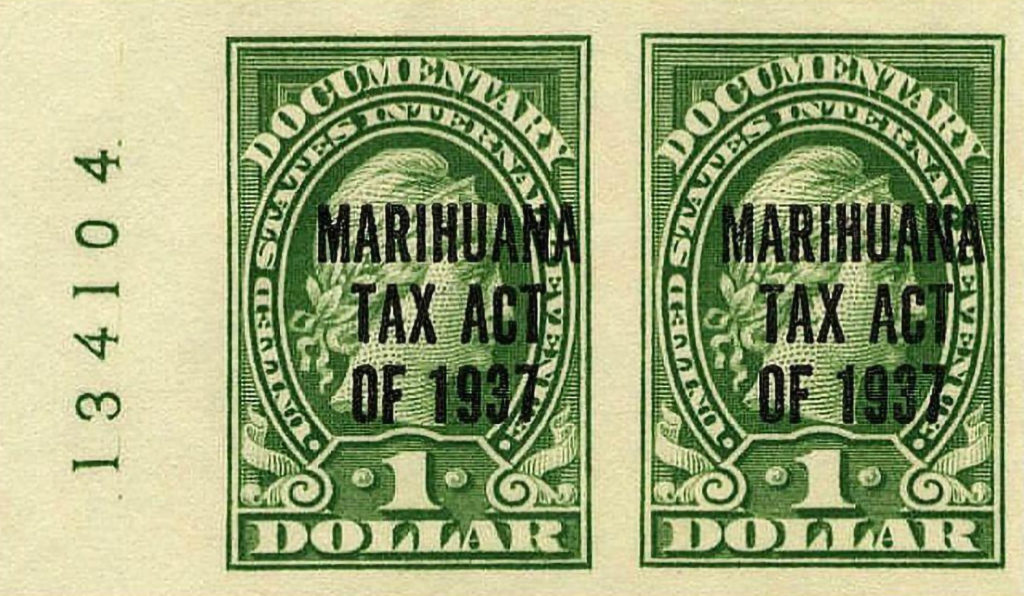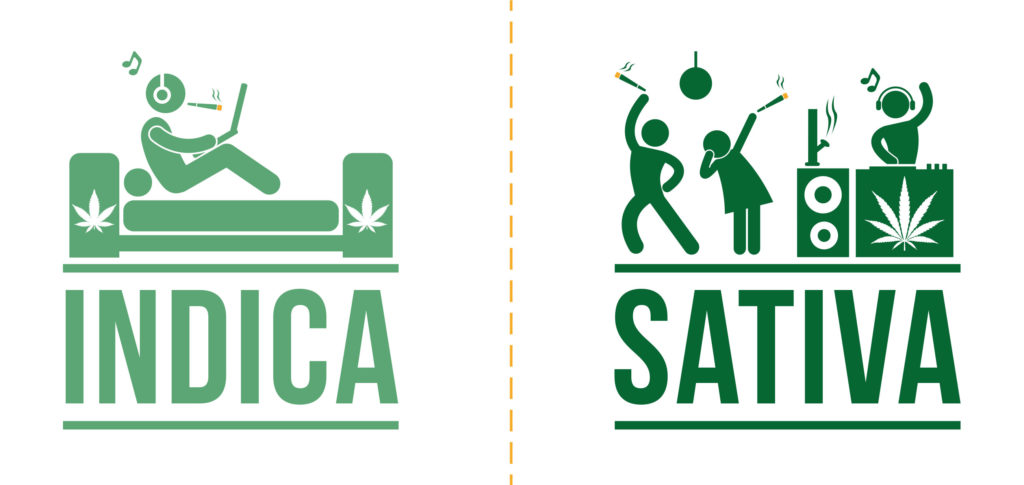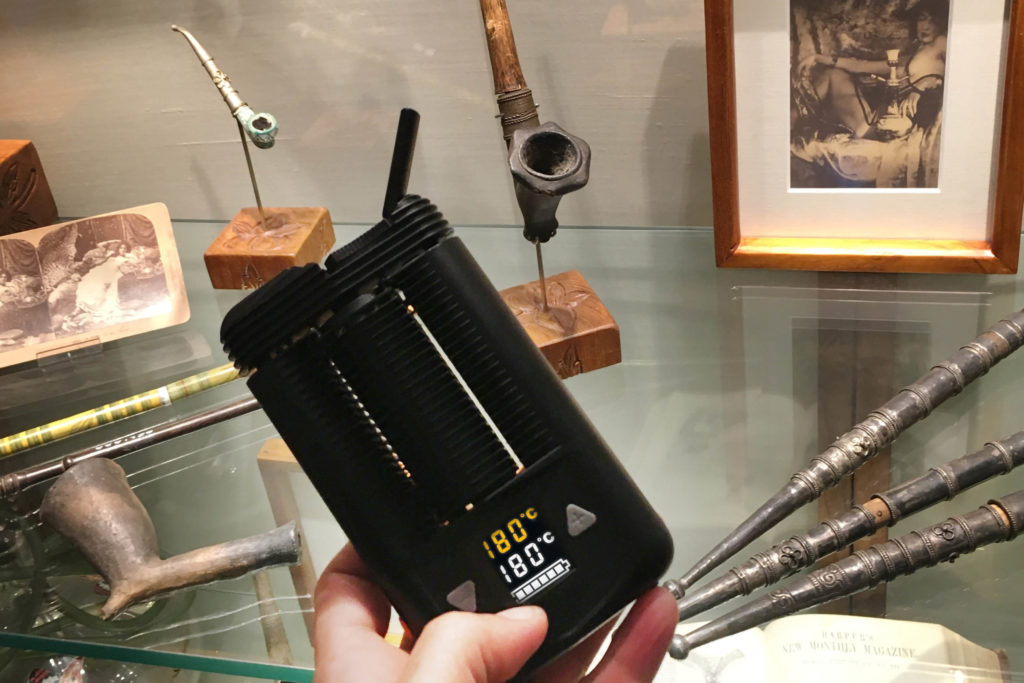More and more countries and US states are legalising cannabis for medicinal use. Some have even legalised recreational use. But what exactly is the difference between medicinal and recreational cannabis?
Sensi Seeds has promoted the medicinal properties of cannabis for years. Knowledge about this has, for various reasons, been pushed to the background, despite the fact that medicinal cannabis was already used thousands of years ago. Fortunately, this natural medicine is currently making a glorious comeback.
At the same time, cannabis is the most widely used recreational drug worldwide. According to a report by the United Nations Office on Drugs and Crime (UNODC) in 2016 cannabis is more popular than heroin, cocaine, amphetamines, MDMA (ecstasy) and other illegal substances. A widely applicable medicine is therefore simultaneously the most popular recreational drug. This raises a question as to the exact differences between recreational and medicinal cannabis use. And how big are these differences anyway?
It’s a complex question that cannot be answered in a few sentences. However, looking at these six differences brings us to an interesting conclusion.
1. The differences between medicinal and recreational cannabis in ancient times
Mankind has known about the multifaceted effects of cannabis and industrial hemp for thousands of years. Numerous archaeological findings and ancient texts have also been found that indicate that cannabis and hemp have been used well before Christ.
The oldest evidence comes from China, where, among other things, the remnants of hemp fabric and pottery decorated with hemp rope have been found. Radiometric dating determined that these cultural relics were up to 6,000 years old and belong to the Yangshao culture. Ancient Chinese medicine also refers to cannabis while other texts describe the plant as “liberator of sin” and “giver of pleasure.”

Ancient Hindu texts written around 1400 BC probably also include references to cannabis as the plant that “reveals the gods”. According to Richard Rudgeley in his book, The Lost Civilizations of The Stone Age, these texts include the words ganjika (which closely resembles the word ganja) and bhanga (resembling bhang). Both are still widely used synonyms for cannabis in much of Asia and East Africa.
The Hash Marihuana & Hemp Museum in Amsterdam and Barcelona also shows the wide use of cannabis and hemp through the ages. The exhibits in these museums demonstrate that medicinal, recreational, spiritual and industrial use coexisted for a long time without any problems.
Cannabis was simply something that existed, and a person decided for him or herself what to do with it.
2. There are political differences between medicinal and recreational cannabis
There are several theories about the initial reason for the ban on cannabis. It is a topic that will certainly be discussed again on this blog. All theories are in any event based on the same fait accompli: the ‘Marihuana Tax Act of 1937’. The passing of this bill was the proverbial endgame, and marked the beginning of a global hemp and cannabis prohibition.

Now, almost 80 years later, the ban on cannabis is slowly beginning to crumble. Politicians increasingly realise that it is cruel to imprison people for using a plant that is not any more dangerous than alcohol or tobacco. The beneficial effects of cannabis are also being rediscovered and modern scientific research substantiates this effect. It is thus becoming increasingly clear why the plant has so many beneficial qualities.
All this helps to ensure that medicinal cannabis is being legalised in more and more places. Recreational use does, however, generally remain an offence. So while different uses of the cannabis plant coexisted peacefully for centuries, modern laws make a distinction between medicinal and recreational cannabis.
3. Differences between medicinal and recreational cannabis strains
Cannabis sativa and cannabis indica are two names for two types of cannabis. Taxonomically (and legally), there is no difference between indica and sativa; all cannabis plants are regarded as Cannabis Sativa L. The two terms are mainly used by the cannabis industry and users to differentiate between characteristics of particular strains so that they can be placed somewhere in spectrum of cannabis effects and patterns.
A multitude of different growth patterns and flavours can be distinguished in this spectrum. The effects differ as well. Sativa strains are usually described as energetic and uplifting, whereas indica strains are more commonly described as calming and relaxing. This is a generalisation as there is infinite potential for overlap of these effects, but this is a basic explanation of the difference.
These variations are attributable to the different combinations of active substances in a particular strain of cannabis. Cannabis contains dozens of active substances that have an effect on the human body and brain. These substances are called cannabinoids. Tetrahydrocannabinol (THC), Cannabidiol (CBD) and Cannabinol (CBN) are the most well-known and researched. THC is one of the principal psychoactive substances in cannabis. CBD is responsible for the calming effect experienced by many users and balances the effects of THC. CBN has a somewhat psychoactive as well as a sedative effect.

In general, indica strains produce a calming effect and are therefore very popular as a way to relax and stimulate sleep. Medicinally, indicas are effective in the treatment of muscle spasticity and rigidity as a result of, for example, multiple sclerosis and Parkinson’s disease. Indicas also work well to ease symptoms of chronic pain, joint pain, insomnia, and neuropathy.
Sativa strains tend to have a more cerebral, energetic or uplifting effect. Sativa strains are commonly reported as more effective for the treatment of nausea (resulting from chemotherapy or HIV/AIDS medications, for example), appetite problems, migraine headaches, depression, chronic pain and similar symptoms.
In short, the difference between medicinal and recreational cannabis strains depends entirely on the needs of the user. All cannabis can be used both medicinally and recreationally. Furthermore, CBD is generally accepted as a medicinal cannabinoid because it is non-psychoactive, and therefore is not usually used recreationally. THC is most commonly associated with recreational use of cannabis, but also has remedial benefits.
4. Differences in the way recreational and medicinal cannabis are used
Cannabis can be administered in various ways. Smoking a joint was once the most common way to use cannabis, but the expanding industry has given rise to many other methods, some of which are just as popular as smoking. However, inhalation of burning cannabis (and tobacco for those who mix) is not considered the healthiest or most medicinal option. Fortunately, since the advent of legalised medicinal cannabis, more attention has been paid to the different ways in which the active substances can enter the body.
A popular alternative is vaporising cannabis. Because no combustion takes place, only the active ingredients are released and no, or very few, harmful by-products, such as benzene, tar and carbon particles. Only the active compounds enter the blood by means of inhalation. Evaporation produces a very pure effect which acts quickly.
Cannabis can also be easily used in all kinds of foods and beverages. However, it is difficult to dose properly, and it takes a long time for the effects to kick in. Herein lies the danger of accidentally taking too much.
All these methods are used both recreationally and medicinally. The desired effect and purpose determine the choice here as well. There is one exception: CBD oil. This cannabis extract is used mainly for medicinal purposes.

5. Does the human body make a distinction between medicinal and recreational cannabis?
All mammals (and therefore also people) possess the endocannabinoid system.
The system possesses a variety of targets (receptors) that react to both substances. Researchers have so far identified two types of receptors: CB1 and CB2. CB1 is especially present in the central nervous system, CB2 particularly in the immune system. Various studies have shown that the endocannabinoid system influences, among other things, endocrine function, metabolism and energy balance, pain and emotional memory, appetite and all kinds of neural processes.
Cannabis therefore works in a very natural way together with the body’s own system. This makes cannabis a pleasant recreational substance, but also a medicinal plant that can alleviate or cure a variety of ailments.
The common goal of this cooperation is homeostasis. This is the ability of organisms to maintain a stable balance in the body, in spite of external agents that disrupt that balance. The process takes place in the background. People are often unaware that there is an imbalance. They are also usually not aware of the body’s reaction to restore balance until they gets sick, which is when the imbalance clearly manifests itself.
It has been scientifically established that endogenous cannabinoids promote homeostasis. Cannabis is therefore hypothesized to trigger the endocannabinoid system and to have a beneficial effect on a large number of imbalances.

6. Differences in the way medical and recreational marijuana are accepted by society
At the beginning of the cannabis legalization movement, many people were wildly opposed to it. This can somewhat be attributed to the lack of scientific research into its medical properties and therefore a misunderstanding of how it could be used medically. Since this time, a lot of time and energy has been spent researching cannabis and its medicinal properties, and understanding how these properties can be applied in modern medicine.
The growth of public knowledge and understanding of cannabinoids has led to a greater acceptance of medicinal cannabis and less stigma associated with it. However, the same cannot necessarily be said about recreational cannabis use. While it is legal to use cannabis recreationally in certain parts of the world, it is less accepted than medical use. More judgment is associated with it, and many countries have legalized cannabis medicinally but not recreationally.
It isn’t unheard of for medicinal cannabis users to reject the notion of recreational cannabis use, perhaps on the pretence that it devalues medicinal cannabis. However, it is probably impossible to find a recreational cannabis user that does not support medicinal cannabis use. A recent YouGov survey supports this, finding that support for legalization seems to be lower if the word “recreational” is used.

The survey shows that 72% of Americans support legalization of medical marijuana, while only 50% support the legalization of recreational marijuana. This shows the difference in the ways that the general public accepts medicinal and recreational cannabis.
The verdict: is there really a difference between recreational and medicinal cannabis?
Now that we have looked at some areas where people often talk about medicinal and recreational cannabis use, we can conclude that the differences are minimal. They are mostly associated with politics and public opinion than science.
There is a tremendous amount of overlap between medicinal and recreational cannabis. Even medicinal users may experience some pleasure from using cannabis, and it can therefore be somewhat recreational (although not completely). By the same token, recreational users sometimes simply use cannabis to reduce stress and sleep better. This can be considered a medicinal quality of cannabis.
So the answer is vague and lies somewhere in between. There are only a handful of pharmaceutical drugs that are also used recreationally by some, but cannabis displays the biggest potential for overlap of these two ways to use a substance.
What do you think? Is there a difference between medicinal and recreational cannabis? Post your comment below.
- Disclaimer:This article is not a substitute for professional medical advice, diagnosis, or treatment. Always consult with your doctor or other licensed medical professional. Do not delay seeking medical advice or disregard medical advice due to something you have read on this website.












Medicinal and recreational cannabis are two distinct uses of the cannabis plant. Medicinal cannabis is used for treating medical conditions, while recreational cannabis is used for personal enjoyment.
Medicinal cannabis is used to alleviate symptoms or treat various medical conditions such as chronic pain, anxiety, epilepsy, multiple sclerosis, cancer, and HIV/AIDS. It contains active compounds such as THC and CBD that interact with the body’s endocannabinoid system, which regulates pain, appetite, and mood.
Recreational cannabis, on the other hand, is used for its psychoactive effects, such as relaxation, euphoria, and altered perceptions. It contains varying levels of THC, which is responsible for the high feeling and is used for recreational purposes by people who are looking to unwind and have fun.
It’s worth noting that the legal status of cannabis varies depending on the country or state. Some jurisdictions have legalized both medicinal and recreational use, while others have only legalized medicinal use, and some have prohibited it altogether. It’s essential to be aware of the laws and regulations in your jurisdiction before using cannabis for any purpose.
Goodmorning, my name is Zenebework Kassaneh and i live in Addis Ababa, Ethiopia and i am a smoker but a smoker that has been hiding this for the last 25 years. now i believe that it is time to legalise it. I know it will take 10 years or it might take a day we dont know that but i do know that you could help me . So Goodmorning again and hope to hear from you
Good afternoon Zenebework,
I hope you’re having a great day,
It definitely is time to legalize!
Best of luck, and I hope you continue to enjoy the blog!
Cheers,
Mark
Keep living in fantasy world as much as you like.
I’m not a troll, I just wanted to point out the laughable hypocrisy.
It’s amazing how, when heroin (a natural substance from a natural plant, namely opium) gets metabolized into a form of morphine inside the human body.
That natural metabolite binds to the mu & kappa opioid receptors, that are naturally present in our holistic divine human bodies.
So you can see, those opioid receptors help us maintain homeostasis by influencing several systems in our natural human body.
Great and well-researched info! thanks for this post! I live in Arizona and from November 4, 2020, all Arizona residents aged 21 and older are legally permitted to purchase, consume and possess cannabis in the state. Personally I use medical cannabis by prescription (I suffer from migraine and PTSD) and these changes don’t affect me. But I guess that for those users who spend at least $100 per month in cannabis, the benefits of paying for a medical marijuana card more than pay off.
Thank you, SeniSeeds, to put down this topic. We really need to understand that medical marijuana heals, whereas recreational marijuana in heavy doses, can be detrimental.
The medical marijuana requires:
1.State issued ID in which you are above 21 years of age
2. Purchase limit needs to be only ten o.z within two month period
3. There is no limit on the THC level or product edible
4. List the price of medical marijuana to be paid.
Whereas for recreational marijuana:
1. There must be just a valid ID card
2. Can purchase one o.z of a flower with 5 g of concentrated. The edible cannot go beyond 100mg of THC.3.
3. The buyer pays additional tax
4. Mostly cash is used to purchase as cash and debit cards are accepted by dispensaries only.
Bless.
Hi Elena,
Thanks for your comment. I’m not sure how you draw the conclusion that “medical marijuana heals, whereas recreational marijuana in heavy doses, can be detrimental” when the article clearly states that “In short, the difference between medicinal and recreational cannabis strains depends entirely on the needs of the user. All cannabis can be used both medicinally and recreationally”? In general, medicinal cannabis is seen as ‘good’ and recreational cannabis is seen as ‘bad’, but this is a misconception that needs to be eradicated if we’re going to both get the most out of what the plant has to offer, and stop punishing people for doing so.
I’m not sure where you’re from but I think the information you’ve given about the requirements for medicinal and recreational cannabis applies only in certain parts of the US. Many other countries have medicinal cannabis legislation, and some have recreational also – we have a whole series of articles called ‘Cannabis In…’ that give details about cannabis use and culture in other countries that you might find interesting.
I hope you continue to enjoy the blog 🙂
With best wishes,
Scarlet
I hope
In reply to David Watson.
Dear David,
Thank you for your comment. We would like to explain why Sensi Seeds is using what you refer to as the ‘old terms’.
We are aware of the new classifications. However, we are also aware of the fact that the old classifications have been used for so many years that they are the most familiar terms for our customer base. In the interests of disseminating information that is both factual and accessible, many of our blog posts still use the terms ‘indica’ and ‘sativa’ when referring to Wide Leaf Drug (WLD) and Narrow Leaf Drug (NLD) varieties respectively.
Our awareness of the new classifications dates back to 2014 when we interviewed Robert Connell Clarke about the release of ‘Cannabis: Evolution and Ethnobotany’.
During this interview he stated “I brought you, with other colleagues, the system that we presently use. And hey, it’s wrong. So now it’s time to think of something that makes more sense. We present one hypothesis here. Somebody will probably prove this wrong. I hope they do before I’m gone, because that will be a really fun debate!”
Sensi Seeds fully supports scientific advancement, and this new hypothesis. Since we are a seed bank invested in making the best kinds of cannabis seeds available to as many people as possible, and making the choice of which type is right for them as easy as possible, we have taken the decision to continue to use the terms ‘indica’ and ‘sativa’ at the present time.
Also in 2014, we published an article called ‘Cannabis in Archaeology & Palaeobotany’ in which the author points out the various mistakes that are made with the classification of cannabis specimens into their correct taxonomic position.
Most recently, we have published ‘Proto-Weed: The Hunt For The Cannabis Ancestor‘ which takes a more in-depth look at the most recent taxonomy of cannabis as well as its most ancient origins. We hope that you find this interesting, and that this answer clears up any misconception about our use of taxonomy.
Best regards,
Scarlet and Martijn
Just curious can a standardized tincture in alcohol be made to be sub-lingual for a 2 + drops to avoid overdose as mentioned in food use use like brownies or say bhang India’s national drink.
If it can be standardized hence eliminating the possible unintentional abuse. You could standardize the indica for sleep, and pain relief and sativa to manage depression. The two combined could be for say fibermilagia.
Other herbs such as California poppy, hibiscus and lavender also adds another sleep aid. Perhaps treating it as an herbal tincture may be a way to get more states to agree to legalize it.
Wrong…
Read Cannabis Evolution and Ethnobotany by Robert Clarke, based on earlier work by Karl Hillig. Sativa’s are only hemp be they WLH or NLH, all drug varieties are Indicas be they WLD or NLD. Confirmed by DNA studies. Shame you did not read this before you wrote this….
Perhaps the most important and ironically most ignored difference between medical and recreational use of cannabis is the fact the poor are more likely to be paying the “highest” price for prohibition, while prohibition continues to perpetuate the backlog in medical and therapeutic research which has been the insidious legacy of the prohibition strategy.
I found the article to be accurate as to the information presented therein. Well stated yet easy to read. Thanks for informing people as to the reasons behind cannabis’ growing popularity. I completely agree that it helps balance people in many ways in order to reach homeostasis.
no difference all users of cannabis know it helps to have a life with more harmony
good smoke people
S0 you use the old terms Indica and Sativa to describe WLD & NLD vs NLH & WLH varieties?
All hemp is Sativa, be they NLH or WLH, all drug varieties are Indica, be they NLD or WLD. Ask Robert Clarke or Karl Hilling, they both have it correct confirmed by DNA studies. Maybe read “Cannabis Evolution and Ethnobotany” by RCC or Karls earlier papers on the subject, shame you did not read them before you wrote this….
Dear David,
Thank you for your comment. We would like to explain why Sensi Seeds is using what you refer to as the ‘old terms’.
We are aware of the new classifications. However, we are also aware of the fact that the old classifications have been used for so many years that they are the most familiar terms for our customer base. In the interests of disseminating information that is both factual and accessible, many of our blog posts still use the terms ‘indica’ and ‘sativa’ when referring to Wide Leaf Drug (WLD) and Narrow Leaf Drug (NLD) varieties respectively.
Our awareness of the new classifications dates back to 2014 when we interviewed Robert Connell Clarke about the release of ‘Cannabis: Evolution and Ethnobotany’: https://sensiseeds.com/en/blog/robert-connell-clarke-everything-know-wrong/
During this interview he stated “I brought you, with other colleagues, the system that we presently use. And hey, it’s wrong. So now it’s time to think of something that makes more sense. We present one hypothesis here. Somebody will probably prove this wrong. I hope they do before I’m gone, because that will be a really fun debate!”
Sensi Seeds fully supports scientific advancement, and this new hypothesis. Since we are a seed bank invested in making the best kinds of cannabis seeds available to as many people as possible, and making the choice of which type is right for them as easy as possible, we have taken the decision to continue to use the terms ‘indica’ and ‘sativa’ at the present time.
Also in 2014, we published an article called ‘Cannabis in Archaeology & Palaeobotany’ in which the author points out the various mistakes that are made with the classification of cannabis specimens into their correct taxonomic position.
Most recently, we have published ‘Proto-Weed: The Hunt For The Cannabis Ancestor‘ which takes a more in-depth look at the most recent taxonomy of cannabis as well as its most ancient origins. We hope that you find this interesting, and that this answer clears up any misconception about our use of taxonomy.
Best regards,
Scarlet and Martijn
Sylent Jay,
Thanks to Sensi Seeds for allowing comments here, and for the site and all it’s news and info. I get caught up in the ideas and don’t watch my tone in my replies as closely as I should at times. I am a big fan of Sensi Seeds’ products and have enjoyed many fine results from them.
My one point really, is that to separate medicinal from recreational cannabis separates supporters and dilutes the power of a single voice against cannabis prohibition. The separation of these camps is fundamental to the anti-cannabis zealots in order to keep the facts subordinate to popular opinion. Opinions can easily be manipulated, as has been happening for 80+ years of cannabis prohibition, but facts and science are much harder to spin and they are clearly on our side. The problem is not enough people know the facts.
The article above seemed to me to buy into some of the flawed rhetoric I’ve seen used against the idea of cannabis normalization – specifically that there is any real difference between medical and recreational users, and that cannabis can actually cause harm in humans. Neither is true, but that would be difficult to see by the way the article frames these ideas.
It’s important to not separate medicinal users from recreational users because we don’t have that luxury yet – the fight really is for the plant, not for any specific personal reasons for use. To allow the foes of cannabis this idea and to treat it as if it has any merit is a gift they don’t deserve, and does nothing to help clear the fog created by our masters to conceal the depth of the lies they have fed us for decades.
Thanks again for the opportunity to comment, and thanks for the article.
Hi Swazi-x,
Thanks for your comment.
We did get that you do not agree with this article, and that is perfectly fine.
In terms of everything else you’ve mentioned besides your own opinion, these are shortcuts made from some details of said article. The different points you are addressing have actually never been stated. No causality implied in regards to anything, no direct harm anecdote mentioned, or theorized, etc.
Sensi Seeds supports recreational users and patients alike, as you might know if you are familiar with the company.
The only point made is that it won’t hurt anyone who is a recreational user to support fervently what is important, and what could actually save lives, in addition to freedom.
Now feel free to add some more information if you’d like! As long as your comments continue to convey the truth, you are free to post them on our website.
With kind regards.
Sylent Jay,
Firstly, what exactly do you mean by “predispositions of a medical nature” if other than mental illness and allergy? Sounds like something a physician might say – vague enough to mean little, but important sounding enough to cause doubt. To which “predispositions” do you refer, if not allergy or mental illness? This is partially a challenge to your use of the phrase, but mostly I’m looking to increase my knowledge on the subject.
Mental illness – schizophrenia specifically, which is most often linked to cannabis use by prohibitionists – has remained consistent at around .5% of the population through the ebb and flow of increased and decreased popular cannabis use. There is no causality connecting cannabis with schizophrenia or any other mental illness – and for you to suggest there is causality shows you haven’t fully researched the subject. It’s a popular demonization ploy left over from our dark Reefer Madness days unsupported by current science.
Using allergy as a reason to separate “medicinal” from “recreational” cannabis is a thin premise as well. The number of people “allergic” to cannabis is very low and the allergic response does not include death – as does other much more common allergies, for example peanut allergies.
People allergic to cannabis exist, but should that tiny fraction define this issue for the vast majority of the rest of us? Using that logic, we should revisit the idea of selling peanuts in grocery stores since peanut allergies can cause death. Should peanuts only be sold by prescription due to the few who are allergic? Obviously no, but similar logic applies.
My point is that current science and over 10,000 years of human use proves cannabis to be non-toxic to the vast majority of people. Non-toxic is the key idea – and it’s the most difficult for the politically correct to understand since it directly contradicts the lies we’ve been taught by government. The fact that this plant is actually, literally harmless – even the allergic suffer minor, temporary discomfort – is the most important issue in this conversation, but it’s often avoided out of fear of angering those in power who are only now admitting that, well, maybe “marijuana” isn’t quite as bad as we’ve been telling you.
The competing camps in this ridiculous charade of demonizing a plant are many, but the only one that matters is science. Politics, economics, social stigma, popular opinion – all exist, but are irrelevant to the basic problem of imprisoning a person for ingesting a plant.
Unless we demand our governments acknowledge the science of this plant and use it as the basis for change in cannabis law, we will continue to be lied to and manipulated by them. It’s how we got here to begin with – liars and racists in U.S. government, and now in the private sector, all intent on preserving and increasing their own profits and financial benefit at the expense of everyone else.
This is why we can’t mince words anymore in this fight. Telling the truth is not “perfect activism” nor is it unachievable – it is our best tool against the lies, equivocations, misdirection and spin that have been used against us for decades. The truth is all we’ve got – but it’s enough if we actually use it.
Hi U.S. Hemp,
Thanks for your comment.
As per announced by the title of this article, we are talking about the subjects, not the communities. And these communities are currently working together, which is great, and which you might have noticed yourself.
Also not entirely sure what you mean with your comparison of the cannabis community with the U.S. government!
With kind regards.
Hello Swazi-X,
Thanks for your comments.
Some people can be harmed in one way or another by consuming cannabis because of predispositions of a medical nature. Allergy, mental illness, etc. These cases are not the majority, but they exist.
On the other hand, cannabis cannot DIRECTLY harm someone, which is what you pointed out, and which also prompted that “downright impossible to be DIRECTLY harmed by it” bit.
This article is about priorities, and not the perfect cannabis activism we all hope for but can’t achieve right now.
With kind regards.
The DEA and Feds do not separate so get over yourselves and work together period
Furthermore (won’t this guy ever shut up?) 🙂 –
“Imagining medicinal users depending on the same dispensaries than [sic] those frequented by recreational smokers, and depending on the same quality, and same lack of medicinal insight on the different strains offered is simply nonsensical.”
To imagine that recreational users do not get medicinal effect – relaxation, anxiety reduction, help with sleep, depression help, etc. – from “recreational” weed is truly nonsensical. Can you name a single cannabis strain that has no medicinal effect? Neither can I. Even with the sole intention of “getting blazed”, recreational users get medicinal effect and quite often medicinal users enjoy their medicine. The distinction between the two is another one of the “divide and conquer” techniques that are constantly being used against any normalization of this plant by the massive and crazy-well-funded government and private organizations whose profits and income will suffer once cannabis is freely available. In the case of Big Pharma, the smart ones realize cannabis contains the mechanism able to wipe out billions of their profits permanently, and to put the power of health back into the hands of the citizens where it belongs.
“Considering medicinal cannabis users at the same level than [sic] potentially unlawful citizens is a (sort of) de facto but misplaced shortcut…”
All cannabis users (in the U.S.) – medicinal or otherwise – are guilty of committing a felony in the eyes of the Federal Government. The only exceptions are those still enrolled in the IND program that was ended in the late ’80s. This tiny handful of patients (5?) still receive federally-grown cannabis for free, every month, and are the only U.S. citizens who use cannabis who are not committing a felony with every puff.
It’s not an exercise in futility to make the distinction either – local law enforcement in the U.S. routinely calls in the feds to prosecute when they really want to take someone down. Once the feds are involved in a cannabis case, there is no allowance for “medicinal” cannabis to be used as a defense – or even mentioned in passing – in a federal courtroom. State laws are not considered. It’s strictly a felony “drug” case which is typically pushed to insane extremes. For selling $35 worth of weed, an Oklahoma woman was convicted of a felony and sentenced to 10 years in prison under federal law. She served 2 full years before being released after much work, expense and public outcry.
The question is cannabis, the plant, not who uses it or why. The answer is that science has shown cannabis is not toxic to humans at any dose, is incapable of causing permanent damage, and has the ability to cure cancer, diabetes, depression, and arthritis, and possibly many other diseases. And “anecdotal” evidence – spanning 10,000+ years – shows cannabis to be the most beneficial plant we can possibly grow whether for food, fuel, fiber, health or any other reason.
It’s only in the last 80 years or so that this plant was made illegal, by a documented racist and proven liar in conjunction with a self-serving group of plutocrats and their cronies to protect their profit margins from the environmentally golden alternative that is offered by our favorite lowly little weed.
“It would be irresponsible to deem cannabis 100% harmless. Regular, recreational cannabis consumers themselves agree that while it is downright impossible to overdose on cannabis, or to directly be harmed by it, regulation is necessary, for both health-related reasons and legal reasons.”
Compare these thoughts:
“…irresponsible to deem cananbis 100% harmless.”
“…downright impossible…to directly be harmed by it.” (cannabis)
How can both be true? Answer: they can’t.
How can a writer not see the direct contradiction within the same paragraph of these two sentences? Answer: I don’t know.
The reason it is not irresponsible to “deem cannabis 100% harmless.” lies in the fact that, despite what we’ve been told about it – according to science, cannabis is 100% harmless to humans. It’s even less harmless than 100% – in that it not only does no damage, but every single puff is physically beneficial whether your intent is to heal or get high. What exactly would the “health-related reasons” be for regulation then?
The Political Correctness cops have done their job here. Splitting “medicinal” and “recreational” cannabis users and framing them as somehow different ignores the basics of the science we have learned – that cannabis is non-toxic to humans. This is the elephant in the room that every good little soldier afraid of censorship ignores – that there is no justifiable, science-based reason to restrict cannabis at all.
The problem between medicinal and recreational weed is an outgrowth of the fight to keep it illegal. It’s a garden variety “divide and conquer” tactic. Medical cannabis is rarely taxed, but recreational cannabis – where it’s been made legal – is very heavily taxed. Per usual, this fight is about money and how much of it any government can squeeze out in regulations and taxes, how much money law enforcement is willing to lose when their favorite targets for arrest are suddenly deemed to be legal, and what sort of political windfall can be had by the politicians involved.
“Young consumers, sensible medical conditions, the need to eradicate any possibility for a black market … these are valid reasons why total legalisation requires carefully tailored policies and guidelines.”
What are “sensible medical conditions” exactly? Physicians in the U.S. have no medical training concerning cannabis – absolutely none. The only knowledge they have is what they’ve put together themselves, thanks to the insane prohibition of this miracle plant, so there is no consensus among physicians about medical conditions that will or won’t respond to cannabis. Since the plant can’t be patented there is little interest in developing cannabis “medicine” by Big Pharma, and despite the many studies done on the plant over the years – there is no agreement on which conditions it could help or cure. Point is, at our level of knowledge (severely limited over the last 80 years by prohibition), all conditions should be considered “sensible” and possibly helped by cannabis – especially when considering that it is 100% non-toxic.
There is a black market for every single controlled item/substance on earth. The very act of “…carefully tailored policies and guidelines.” constructed around the production and distribution of an item/substance GUARANTEES a black market by limiting the availablility of that item/substance. Controls raise prices – and this is a problem cannabis consumers, whether medical or recreational (if you must make the distinction) fight against and suffer. The artificially inflated prices for cannabis literally CREATE a black market, and make it fully worthwhile to spend months in the wilderness of the U.S. tending plants on public lands and ignoring environmental concerns for the fat paycheck at harvest.
All dispensaries and all recreational outlets sell cannabis at full black-market prices. $300/oz +/- is what you expect to pay on the street for most of the last decade – why is it we’re still paying this inflated amount? The ridiculous haze of lies, half-truths, political posturing, and especially entrenched prohibition-dependent industries – including but not limited to, bail bondsmen, Big Pharma, all law enforcement from local cops to D.E.A. and everything in between, alcohol lobby, blah blah blah – conspire to at the very least keep the prices up, which limits availablility, inflates prices and continues to nourish the black market.
These are basic economic principles that are derailed when red herrings of division (medical vs. recreational) are introduced into the argument. The division keeps the cannabis discussion superficial and untethered by common sense and science – just like law enforcement, prosecutors, for-profit prisons, Big Pharma and your local liquor store prefer.
Don’t let the same liars who initially created this problem out of thin air for their benefit (politicians & law enforcement) define the path to correcting this crime against humanity called cannabis prohibition.
Crime Against Humanity – this is exactly what cannabis prohibition will be understood to have been once the honestly miraculous benefits of this little plant are fully known. Cancer cure. Diabetes, arthritis, depression cure.
Those alone are enough to show cannabis to be even more miraculous than penecillin.
Tell the truth.